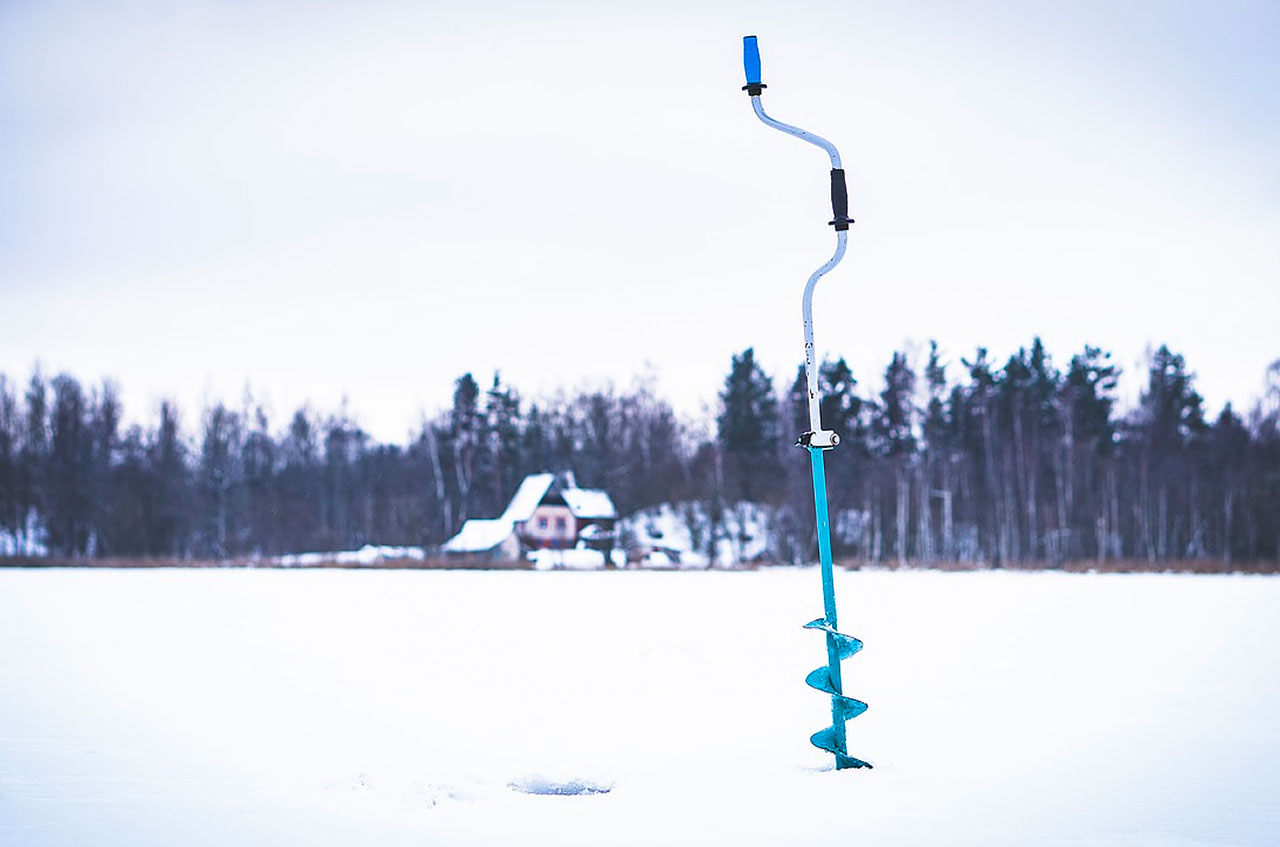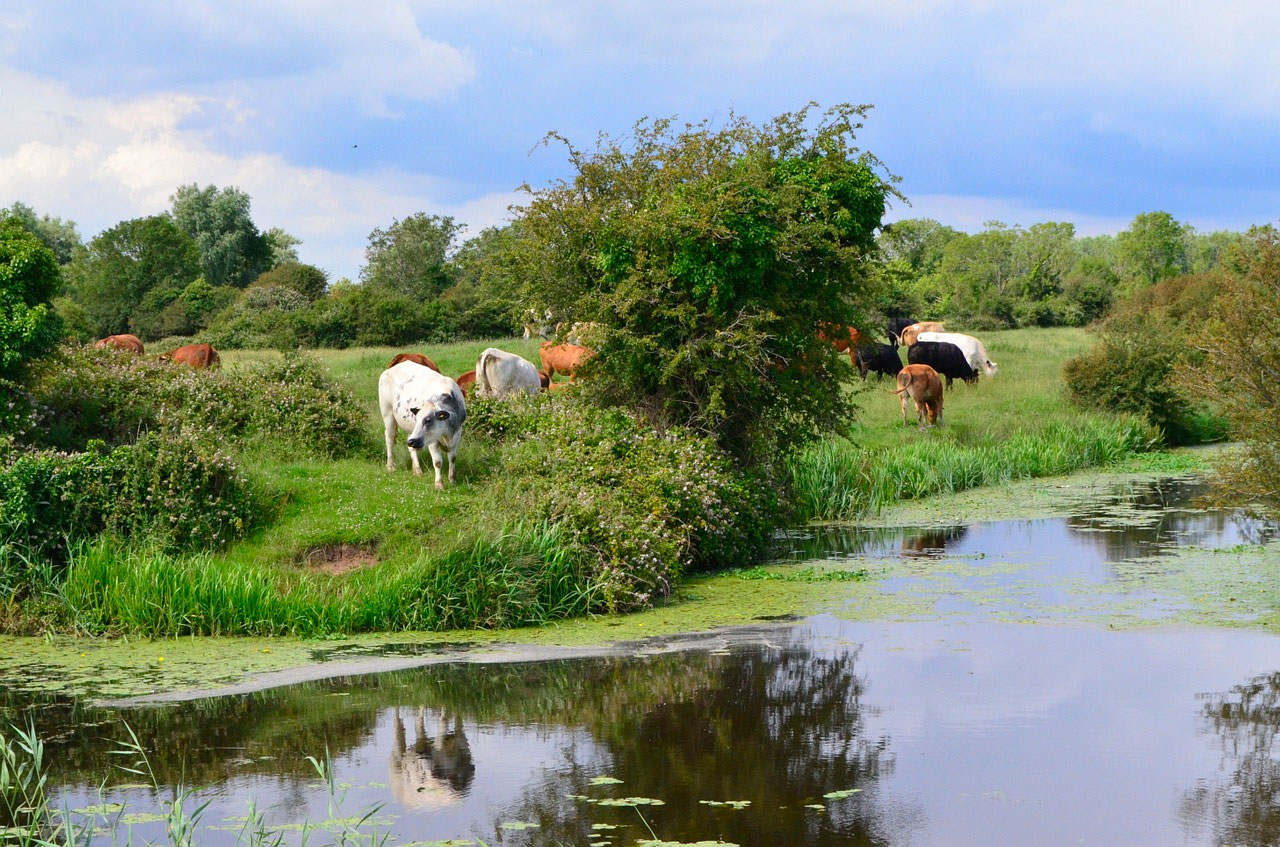Todd S. Bergmann of the Valders Journal highlights the presentations of local ice fishing expert Clint Ward and SLO Farmers Co-op representative Suzanne Zipperer. The two were guest speakers at the February 27, 2020 MCLA meeting.
Todd Bergmann’s articles are made available with permission from the Valders Journal.
Thank you to The Valders Journal for allowing us to share these timely and informative articles.
Support your local news! A subscription to the Valders journal is $30/ year. Great articles, great photos. Complete community coverage. Call (920) 775-4431 to subscribe. You can like their facebook page here.
Lakes Assoc/Ice Fishing By Todd S. Bergmann
With high fishing pressure on area lakes, ice fisherman have to use advanced technology to improve their chances, tournament fisherman Clint Ward told the Manitowoc County Lakes Association last week. While rod selection is important, expensive rods are not necessary, said Ward, who does not take compensation from providers of fishing products.
“Most of my rods are $25 rods that I get from Fleet Farm,” he said. “I purchase reels and rods separately so I can mix and match the reels that I want with my rods.”
Rods should be 24 to 36 inches long, Ward said. Fastaction rods, where the tips bend, allow fishermen to put a good hook-set in the fish, he said. Noodle rods, which bend in the middle, with small bobbers, allow for setting hooks, when fish do not know they are there, Ward said. He uses rods with large eyes when hole hopping to prevent ice building up and smaller eyes while fishing from inside his shack.
Ward puts spring bobbers on every line, preferring titanium bobbers because they always straighten out. “Small spring bobbers are better,” he said. Old-fashioned spring bobbers are preferred, especially when fishing for crappies, which attack bait from the bottom. Therefore, Ward said a bobber going up will indicate the crappie is taking the bait.
For clear lakes, such as Cedar Lake, Ward said fishermen should use a 1- or 2- pound test line to catch more fish. A good guideline is 2-pound line for mid-sized bluegill and perch, 3-pound for larger perch and crappies, 16-pound test for 16- to 19-inch walleye and 10- to 12-pound test for Great Lakes walleye and 20- pound for northern pike, he said. Colored line is great for small-diameter panfish, Ward said.
Also, he recommends ice fly reels rather than old-fashioned spin reels to prevent line spin. Ward explained that fish will not touch a jig that is spinning. One alternative is an old-fashioned Schooley reel, he said. Another time-tested product Ward recommends is a tipdown. When one is in use, a crappie will grab bait at about seven or eight feet above the bottom and the tip-down will go down. “The fish technically hook themselves,” he said. “I do not reel like a normal reel .… After I catch a fish, I can pull this line out and put it right back in again.”
Ward said he uses a fluorocarbon leader on a colored line. Fluorocarbon and 2- or 3-pound test lines are invisible to fish, he said. While fluorocarbon is an excellent leader material, it is too expensive for the entire line. “If you are fishing tournaments, it is every little thing that you do that will help you get fish,” Ward said. Further, he advised avoiding mono-filament lines when ice fishing, because water freezes more quickly on it.
To find fish under ice, Ward recommends a Vexilar sonar fish detector, with a rechargeable battery and a zoom to show fish activity in the bottom of a lake. “It shows the smallest perch hugging the bottom of the lake,” he said. Another fish detector, the Garmin Panoptix LiveScope system, can pinpoint fish up to 70 yards away, Ward said. “It will actually see that whole school,” he said. “If the fish are close enough, you can tell if it is a walleye, crappie, bluegill or perch.”
With a GPS on the unit, Ward said fishermen can walk to a place just above the school, drill a hole and catch fish. With new technology, fishermen are having an easier time finding sturgeon, according to Larry Bonde of rural Kiel, chairman of the Wisconsin Conservation Congress. Because sturgeon season ends when a catch quota is reached, he said new technology may shorten the seasons in future years.
Fishermen need to use the right lure or bait for the fish they seek, Ward said. Rainbow- colored jigs are best for bluegills. Chartreuse and gold jigs and wigglers work best for perch, he said. Gold spoons with or without minnow heads work best for crappie, Ward said. Red lures also work well for crappie, he said. When fishing recently on Cedar Lake, Ward said he used a treble hook, which chased away all the crappies until he replaced it with a single red hook. “I caught every single crappie which looked at that lure,” he said.
To cut through ice, Ward suggested propane-powered or lithium battery-powered ice augers. One bottle of propane will be enough to cut about 100 holes, he said.
The best lakes for ice fishing in Manitowoc County are Carstens, Weyers, Bullhead and West Lake off Horseshoe Lake for bluegill; English, Long and Shoe lakes for crappies; and English Lake for perch, Ward said. He said small numbers of walleye are in Cedar, English, Pigeon and Silver lakes.
Lakes Association/Farming By Todd S. Bergmann
Not planting crops near waterways will improve lakes and streams, an organic farming advocate asserted last week. Suzanne Zipperer of the Sustainable Local Organic Cooperative spoke to the Manitowoc County Lakes Association on Thursday.
Zipperer runs a small organic farm at the intersection of county highways Q and B in northern Manitowoc County, raising chickens, raspberries and vegetables. Dairy farms, many of which are getting bigger, spread manure on land, which runs off into lakes and streams, she said.
“We are not going to get clean water through regulations because the farm industry is so big,” Zipperer said. “We have to look to ourselves and our own communities to be good neighbors to our farmers.”
However, many farmers disagree with what Zipperer said. Federal and state governments in recent decades have increased regulations on what farmers, industries and municipal governments put into water.
To meet regulations, many dairy farmers and manure applicators say that they apply manure on fields so as to add nutrients to the soil without it running into lakes and streams.
Zipperer advocated grazing animals on farms, as farmers did years ago and farmers in the Sustainable Local Organic Cooperative do, to keep manure and soil from running into streams and lakes. “When you graze cows on the land, it is an automatic return into the land,” she said.
Zipperer urged lake associations to encourage nearby farmers to stop planting row crops near lakes and instead plant grass for cattle to graze. “The ideal food for cows is grass,” she said. “The ideal food for beef cattle is grass.” She advocated farming methods that are socially acceptable, environmentally sustainable and make economic sense. Zipperer said that Wisconsin dairy farmers are in an economic mess because they are in a global market; therefore, they should withdraw from that market.
“You want to buy it locally and take our farmers out of that global competition,” she said. “We pay fair wages. We want to make a living that our children will have a decent life. “The only way we can do it is for the consumers to demand local.”
However, current Democratic Governor Tony Evers and his Republican predecessor, Scott Walker, promoted increasing exports as a way to help Wisconsin farmers, including dairy farmers.
To help consumers buy local products, Zipperer said the Sustainable Local Organic Cooperative markets a variety of locally grown meat and vegetable products to consumers in northeast Wisconsin. Further, she said people should ask at the store for Wisconsin grass-fed beef.
Thank you to The Valders Journal for allowing us to share these timely and informative articles.
Support your local news! A subscription to the Valders journal is $30/ year. Great articles, great photos. Complete community coverage. Call (920) 775-4431 to subscribe. You can like their facebook page here.



